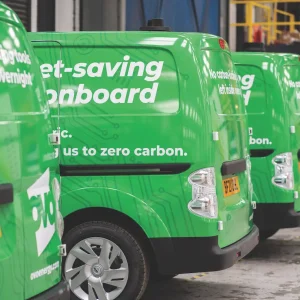Ensuring that a company shows a duty of care to its drivers and, therefore, the public in general is a vital aspect of a fleet manager’s role. The MOVE platform marketed by Fleet Operations interconnects various facets of technology. A management portal, stakeholder portal, driver portal and a mobile driver app allow all concerned to access the platform, using the data to help reduce the number of incidents. Competitor products may also collect driver data, but MOVE also provides actionable insights, creating a unique risk and compliance journey for each driver.
No additional hardware is required in the vehicle apart from a mobile phone. Sensors are utilised that measure unsafe driving habits such as harsh braking, sudden acceleration, speeding and use of the phone providing the data for bespoke reports. An open API permits integration with other tools including telematics resulting in an overall risk score being generated for each driver. Without intervention, an appropriate driver education option is triggered that may include e-learning courses or on-road training, all designed to address areas of specific concern for that driver. Should an incident occur, Fleet Operations also offers a bespoke post-incident review with a personal coach, together with the availability in 2024 of eight new e-learning modules surrounding the subject of ‘driver mental health and well-being’ to support those who require it.
MOVE doesn’t just monitor driver behaviour. The driver companion app guides the user through all aspects needed to ensure the van is operated safely. There’s a guide to daily walk-around safety checks and the driver can upload photos of any areas of concern through the app – this moves seamlessly to the stakeholder portal and any issues are instantly flagged to the Fleet Operations maintenance team. The integration aspect central to the MOVE platform means repairs can be automatically booked in via any service booking platform, ensuring defects are dealt with before becoming a more serious issue. Other bespoke alerts can be created for ancillary equipment, for example, the condition of fire extinguishers.
The platform can provide automatic red flag alerts. This means should a vehicle or its driver be classed as unfit, ineligible or unable to be driven / drive, an alert is dispatched to the fleet manager while the system simultaneously reviews and actions alternative mobility options. The app now also has crash detection and emergency contact functionality.
MOVE isn’t just reactionary, the platform also takes measures to prevent future issues. On a quarterly basis, it dissects driver behaviour in order to highlight any increase in risk. Service and repair data is analysed and if an area of concern is highlighted, a course of preventative maintenance is instigated, reducing the risk of unscheduled downtime.
Fitness to drive is monitored, mandating the answering of questions regarding health, well-being and other relevant factors. A live integration with the DVLA displays vehicle information such as tax and MOT status together with driver data including licence validity, entitlement categories, restrictions and endorsements.
Fleet Operations claims that the MOVE driver app has reduced the number of at-fault accidents by 29%. Additionally it has suggested performance improvements for 62% of drivers monitored and has reduced the resources required to manage vehicle checks and defects by 90%. It has so far managed more than 14,000 vehicles and 19,150 defects, including 89 vehicles that were classed as illegal and/or unsafe. Feedback scores from drivers have been outstanding, with 92% reported as ‘excellent’.
Highly Commended: Fleet Service GB

Designed to enhance driving skills and reduce incidents on the road, operating costs and downtime, along with improving driver well-being and productivity, Fleet Service GB’s Achieve Driver Continuous Learning Programme provides a cohesive driver safety package.
Drivers download an app and apply for an ‘Authority to Drive’ by following a three-stage process. The first gathers general information and provides declarations, the second asks driving scenario-based questions while the final part requests authorisation to perform a driver licence check. The level of training required is assessed and individuals are prioritised for support, in-vehicle training or help. Other ongoing learning methods are available such as e-learning and classroom training sessions.
After this initial assessment, driver together with vehicle performance is monitored on an ongoing basis including by telematics. Road traffic offences are recorded and included in the overall illustration.
Fleet Service GB is confident that its product sets an industry-standard in its field.





